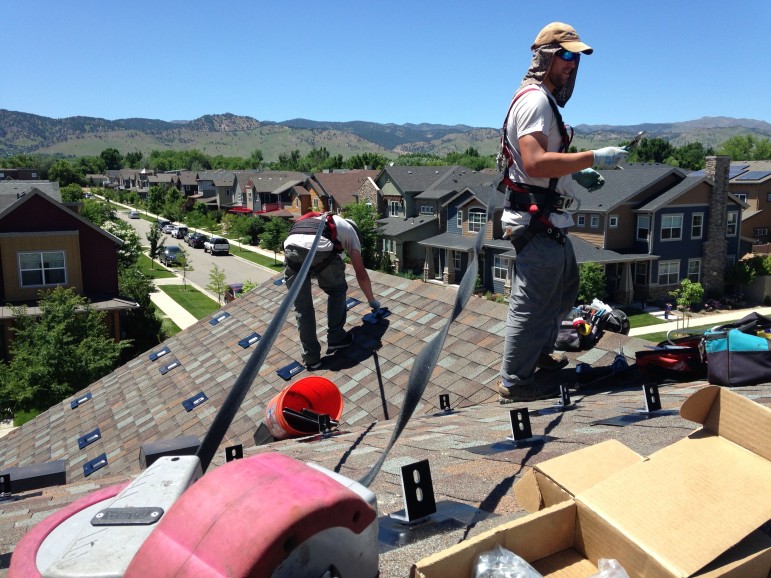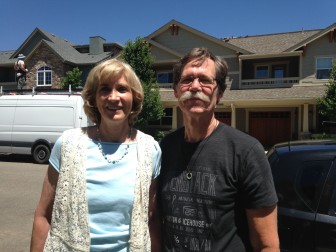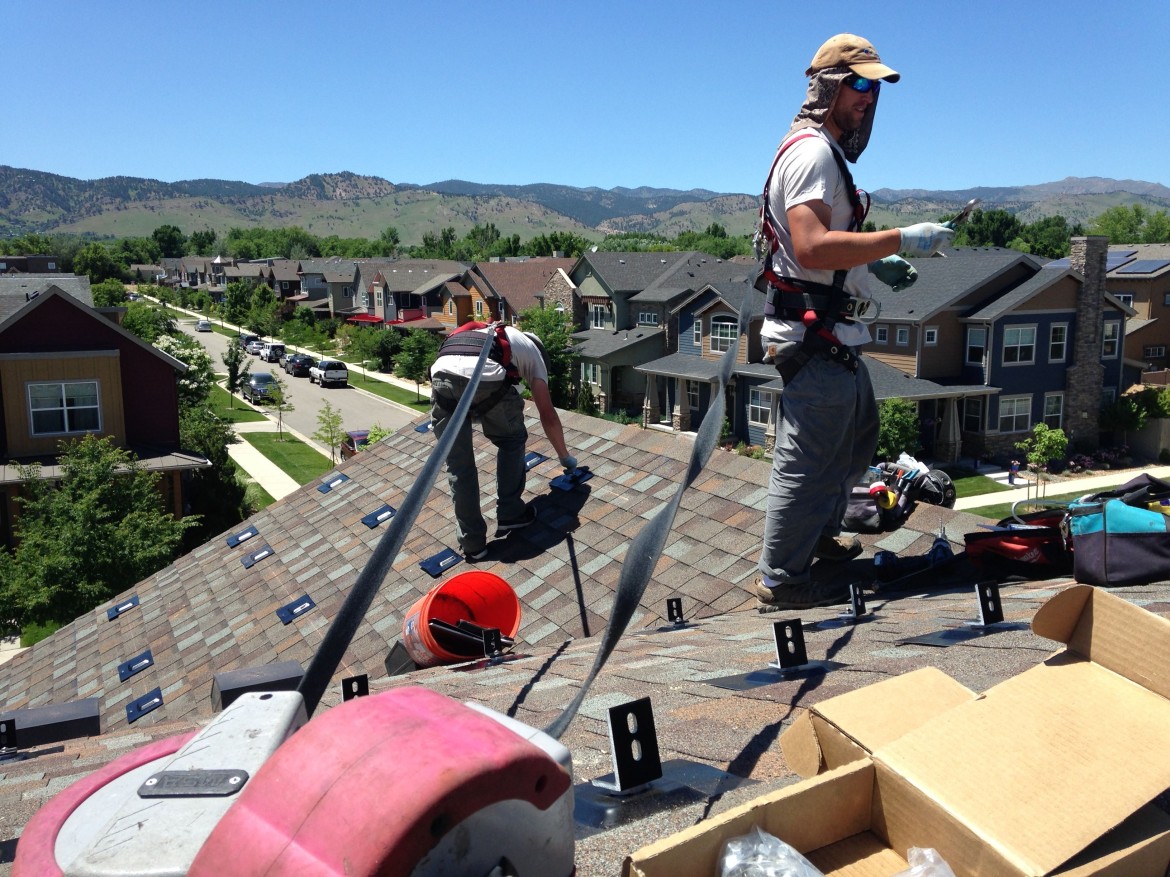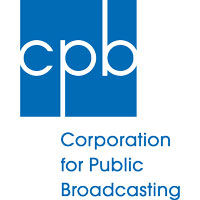
Dan Boyce
Employees with Namaste Solar install mounting brackets for a new rooftop system in Boulder, Colorado.
This week, Inside Energy is exploring how solar power is changing the way electricity is delivered in the U.S. See the full series here.
The cost of solar is falling rapidly–down 60 percent in just the last three years. These days, solar is not only good for the environment, it’s becoming more of a smart financial move for households and communities.
And people are buying. As laid out in this report from the Energy Law Journal:
“Since 2006, solar installations in the United States have increased by 1600-percent, and the overall market is expected to grow by a factor of ten between 2010 and 2016.”
But, utilities aren’t all happy about this trend–in fact, many are fighting against it. That’s because more customers putting solar panels up on their rooftops means utilities will be selling less power to them. Additionally, in most states, utilities are actually required to buy any excess power those customers produce beyond what they are using at any given time, through a system called net-metering.
“That’s a concern,” said Xcel Energy Vice President of Policy and Staff Frank Prager. “That’s why we’re trying to address it today before it gets to be too big a concern.”
Xcel, and many other major utilities across the country, are members of an industry trade group called the Edison Electric Institute. In a 2013 report called “Disruptive Challenges,” the institute said this trend–more customers selling electricity to the utility, rather than buying from them – is simply not a sustainable business model. Even though rooftop solar is such a small share of the nation’s overall electricity production at this stage (far less than one-half of one percent in most of the U.S.), EEI suggests the industry support measures that would discourage more rooftop solar expansion.
That’s happening around the country. For example, Arizona Public Service fought hard last year to put in place fees on rooftop solar customers of between $50 and $100 per month. State regulators eventually agreed to a much smaller fee of about $5 per month.
For Xcel, it’s meant a major ad campaign:
Advocating big fields of solar panels controlled by the utility, not by the customer.
The Institute for Energy and Environmental Research studies how to bring more renewable power online. President Arjun Makhijani said utilities are entrenched, having traditionally relied on guaranteed rates of return.
“They’re not used to new things coming along that would challenge this very comfortable state of affairs,” Makhijani said.

Dan Boyce
Don Dugger and his wife Barb Gifford outside their Boulder home.
“Xcel either changes to match technology or they’re gonna get left behind,” said Boulder, Colorado resident Don Dugger while looking out at the new solar installation going up on his roof.
The way Dugger sees it, battery technology for storing solar is coming along fast enough.
“We won’t need the grid at all!” Dugger said.
While that may be far-fetched, changes are coming. Even as utilities try to fight rooftop solar, some are also preparing for its continued advance.
Even Arizona Public Service, which fought so hard for those greater fees on solar customers, is jumping into the market itself. A few weeks ago, APS announced a brand new program–leasing rooftop solar panels to their customers as an option to bring down electric bills.
To see data on the rise of net metering across the U.S., see this post by Inside Energy data journalist Jordan Wirfs-Brock.








